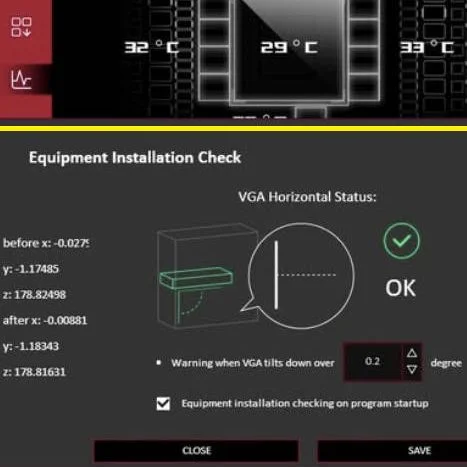
ASUS RTX 5090 Fights Card Sag with Built-in Gyroscope: A Necessary Innovation?
Graphics cards are getting heavier, and ASUS is taking notice. The new ASUS ROG Astral RTX 5090, one of the most premium GPUs on the market, is tackling the problem of GPU sag head-on with a built-in gyroscope and accelerometer. Is this a game-changer or an over-the-top solution for a persistent problem?
The increasing size and weight of high-end GPUs have put a strain on PCIe slots, leading to potential damage and performance issues. ASUS's solution? Integrating a Bosch Sensortec BMI323 Inertial Measurement Unit (IMU) into the ROG Astral RTX 5090. This IMU, as reported by Videocardz, allows the card to detect subtle changes in its position and alert users to potential sagging. Think of it as a built-in level for your expensive graphics card.

According to a Tom's Hardware report, the "Equipment Installation Check" feature in ASUS's GPU Tweak utility uses data from the IMU to monitor the card's angle. Users can set a sag angle threshold that triggers a notification, giving them a chance to readjust the GPU before any damage occurs. This is particularly crucial since the air-cooled model of the ROG Astral RTX 5090 weighs over 6 pounds (3 kilograms).
While many GPUs come with anti-sag brackets, these aren't always foolproof. They can slip or loosen over time, leaving the card vulnerable. The ASUS solution aims to provide a more proactive approach to GPU maintenance.
This isn't the only unique feature of the ROG Astral. It also boasts Power Detector+, which monitors power distribution, and a Thermal Map, which uses strategically placed temperature sensors. These features, along with the sag detection system, contribute to the card's high price and weight but provide a comprehensive approach to GPU protection. 
The inclusion of a gyroscope and accelerometer in a GPU raises the question: Is this the future of high-end graphics cards? As GPUs continue to grow in size and power, manufacturers may need to implement more sophisticated solutions to combat physical stress and ensure longevity. ASUS is taking a proactive approach, but only time will tell if this feature becomes a standard in the industry.
What do you think? Is this a clever innovation or overkill? Let us know your thoughts in the comments below!